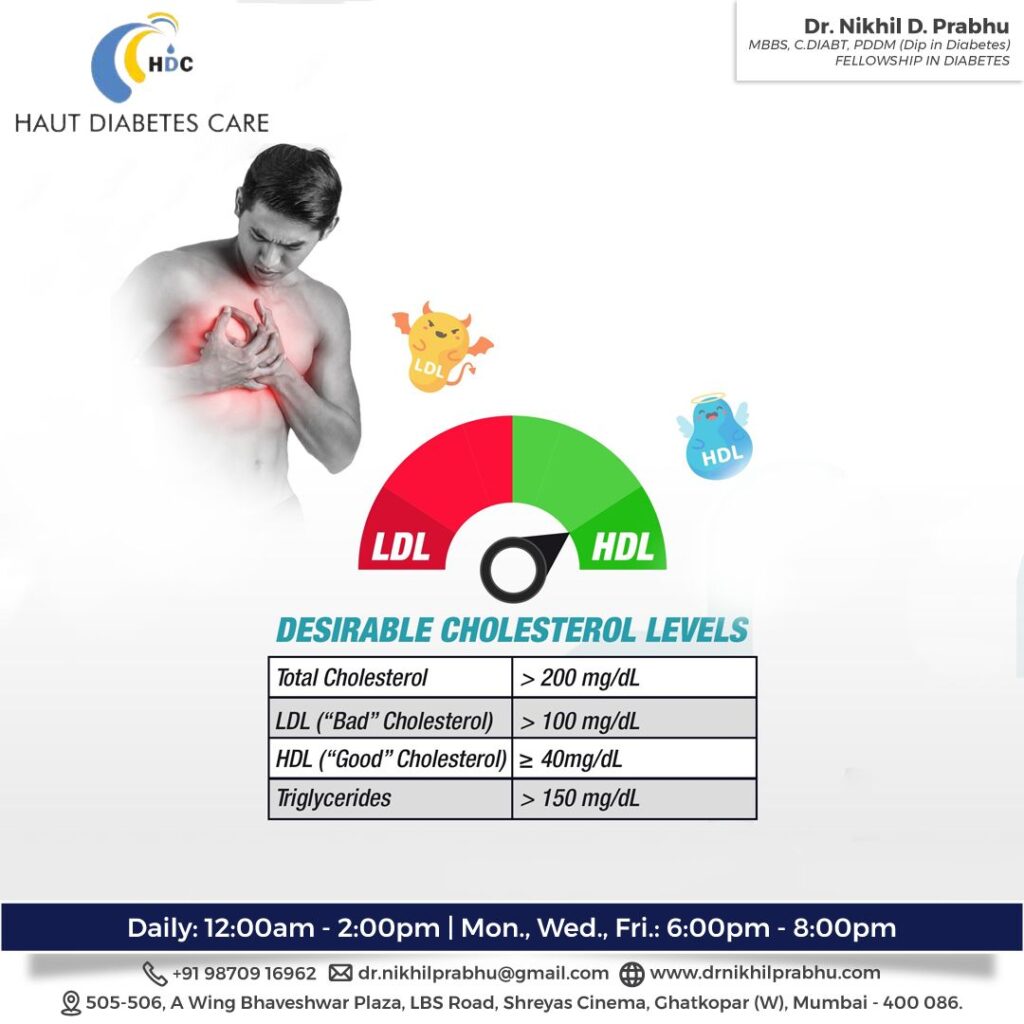Cholesterol Control Guide
How much is desirable cholesterol level and how to Control cholesterol levels?
Desirable cholesterol levels can vary depending on the specific type of cholesterol. Here are the generally recommended levels:
Low-Density Lipoprotein (LDL) cholesterol: LDL cholesterol is often referred to as “bad” cholesterol because high levels of it can increase the risk of heart disease. The desirable LDL cholesterol level depends on the individual’s risk factors for heart disease.
In general, the following guidelines are recommended:
- For individuals at low risk: Less than 130 mg/dL (3.4 mmol/L)
- For individuals at intermediate risk: Less than 100 mg/dL (2.6 mmol/L)
- For individuals at high risk or those with existing heart disease: Less than 70 mg/dL (1.8 mmol/L)
High-Density Lipoprotein (HDL) cholesterol: HDL cholesterol is often referred to as “good” cholesterol because it helps remove LDL cholesterol from the bloodstream. Higher levels of HDL cholesterol are generally desirable. An HDL level of 60 mg/dL (1.6 mmol/L) or higher is considered protective against heart disease, while levels below 40 mg/dL (1.0 mmol/L) for men or 50 mg/dL (1.3 mmol/L) for women are considered low.
Total cholesterol: The total cholesterol level includes both LDL and HDL cholesterol. Generally, a desirable total cholesterol level is below 200 mg/dL (5.2 mmol/L). However, it’s important to consider the individual’s LDL and HDL cholesterol levels within the total cholesterol reading.
To control cholesterol levels, here are some strategies:
- Healthy diet: Eat a balanced diet that includes whole grains, fruits, vegetables, lean proteins, and healthy fats. Limit the intake of saturated fats, trans fats, and cholesterol-rich foods.
- Regular exercise: Engage in regular physical activity, such as brisk walking, jogging, cycling, or swimming. Aim for at least 150 minutes of moderate-intensity aerobic exercise per week.
- Weight management: Maintain a healthy weight or lose weight if necessary, as excess weight can contribute to higher cholesterol levels.
- Quit smoking: Smoking can lower HDL cholesterol and increase LDL cholesterol. Quitting smoking can improve your cholesterol profile and overall heart health.
- Limit alcohol consumption: Excessive alcohol intake can increase cholesterol levels. It’s recommended to limit alcohol consumption to moderate levels (up to one drink per day for women and up to two drinks per day for men).
- Medications: In some cases, lifestyle changes may not be enough to control cholesterol levels. Your doctor may prescribe medications such as statins to help manage high cholesterol levels. Now a days new medicines including PCSK9 inhibitors, bempedoic acid, ezetimib etc are available if statins are unable to reduce cholesterol sufficiently.
Triglycerides are a type of fat found in the blood. They are the most common form of fat in the body and are primarily derived from the foods we eat. Triglycerides serve as a source of energy for the body, but high levels of triglycerides can increase the risk of heart disease.
It’s important to consult with a healthcare professional to determine your specific cholesterol targets and develop a personalized plan to control your cholesterol levels effectively. Diabetes patients are at higher risk of dyslipidemia and should consult with their Diabetologist regarding the same. Higher sugar levels makes blood more viscous or thick and can lead to blockages and attack.








